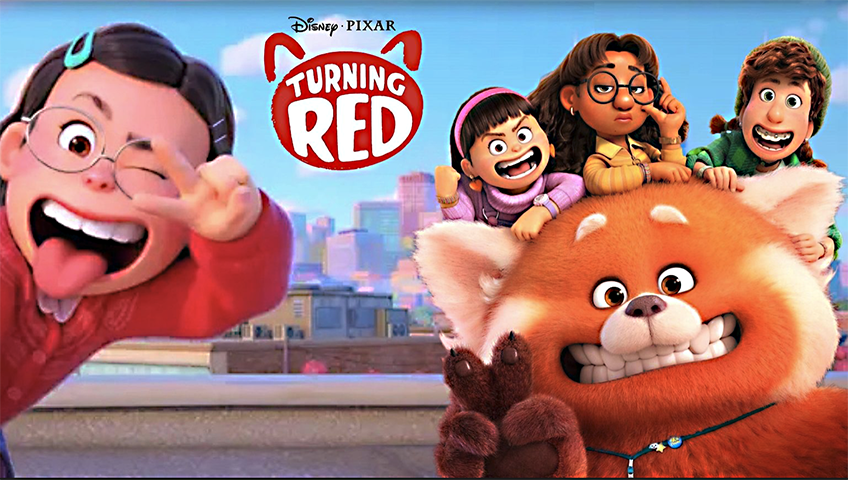I Was Raised by South Asian Immigrant Parents
I was born in a small American town and raised in a family with South Asian roots. My physician father immigrated to the United States during the “brain drain” between 1966-1975 when physicians and scientists from developing countries were welcomed to developed nations to fill science and healthcare gaps. My story is similar to many others whose parents crossed the Atlantic to navigate an entirely new land. They traveled to their new destination without resources or support, while homesick for their home countries.

Anyone raised similar to me understands what this experience is like. Because I was the eldest and a daughter, my parents were very strict with me. Like other Asian kids, I was taught the virtues of keeping my head down, studying, and working hard. All my extracurricular activities were supervised by adults. The pressure to succeed was palpable, as was the pressure to not stray from what was expected of me, both as a female and as someone not raised in mainstream culture.
The Standard of Beauty in Conflict With Asian American Pacific Islanders (AAPI) Representation in Entertainment
Anyone not born a European-American grows up seeing certain images of beauty. This image is of a thin woman with porcelain-colored skin, blonde hair, and blue eyes. We’re inundated with these images on TV, in toy selections, in magazines, and in movies. The Asian characters we’ve seen are either strange (Mr. Yunioshi in “Breakfast at Tiffany’s”), nerdy (Rajesh Koothrapalli in “Big Bang Theory”) or adept martial arts professionals (Bruce Lee).
These same images of beauty carry over to children’s animated movies made by Disney and others. Snow White made her debut in 1937, and 52 years after Snow White, Disney introduced the first non-human princess Ariel in 1989. The first non-white Disney princess, Jasmine, would not arrive until 1992. Even though Asians have been present in the United States since the 1830s, Mulan premiered in 1998, 61 years after Snow White, and 168 years after Asian immigration to the United States. At last, in March 2022, Pixar released “Turning Red,” a computer-animated fantasy comedy about embracing who you are centered around an Asian-predominant cast. The movie was written and directed by Asian women.

My “Turning Red” Movie Review
[SPOILER ALERT]
“Turning Red” is a coming-of-age film about Meilin, a 13-year-old girl living in Toronto, Canada. The movie opens with Meilin walking to school carrying a flute case with a “This Girl Loves Math” sticker. She’s a stereotypical “good girl” who listens to and respects her elders, helps with the family business, speaks multiple languages, plays several instruments, aces all of her classes, and yup, is good at math. Her mother Ming holds high expectations of honor student Meilin one day becoming a United Nations Secretary-General.
When Meilin is at her desk, her shelves are adorned with 1st-place ribbons and trophies. Her wall has a series of posters proclaiming “Study, Work, Listen.” Meilin hangs out with girlfriends who are swooning over the neighborhood hot guy, a cashier at the local market who is a white guy named Devon. Meilin draws Devon in her notebook and her horrified mother publicly confronts Devon, who in turn humiliates Meilin. Meilin has a restless night of sleep and wakes up finding she has shapeshifted into a red panda. Meilin realizes the red panda is brought on by strong emotion. Meanwhile, Ming frets that “no one can see her like this.”
Meilin inadvertently reveals herself to her girlfriends who lovingly accept her furriness, odor and all. In this bonhomie, Meilin discovers her happy place, the mental state of zen that keeps the red panda at bay. Ming’s lack of boundaries with Meilin only exacerbates the red panda.
Meilin’s family plans an intervention at the next red moon to rid Meilin and her family of the red panda. While waiting for the red moon, we see 2 versions of Meilin: Mei-Mei, the goody-goody girl who speaks in robotic monotone to quell internal turmoil that might provoke the red panda, and Meilin, the fun-loving, free-spirited, enterprising music lover.
As Meilin becomes more “free” and “rebellious,” her popularity grows. She receives an invitation to her nemesis’ boy-girl birthday party, where she finds herself in the center of an adulating crowd, shaking what her momma gave her to Beyonce’s Bootylicious. The night does not end well due to an altercation with the nemesis, and Ming takes Mei-Mei home.
The family prepares to perform the ritual to rid Mei-Mei of her red panda. In the end, Meilin declines to get rid of her red panda, telling Ming “I’m keeping it,” and heads off to the 4Town concert with her friends. At first, Ming sees this rebellion as a personal attack, but ultimately comes to realize Meilin is her own person with her own autonomy. “I see you, Mei-Mei. You try to make everyone happy and are so hard on yourself. If I taught you that, I’m sorry. Don’t hold back for anyone. The farther you go, the prouder I’ll be,” Ming tells Mei-Mei.
[SPOILER ALERT OVER]

How “Turning Red” Resonated With Me
So much of this story resonated with me. Most of our Asian American parents came here with limited resources and sought stable jobs, instilling similar values in us based on their own life experiences. These are parents whose children are their whole world, parents who live not for themselves, but for their children, parents who cook all of their children’s favorite dishes and keep them well-fed, and parents who think they know who their children are and what they like. They may not consciously think of their child as an identity outside of the family. They taught and modeled the virtues of working hard, getting a good education, getting a good job, and being an obedient daughter. The flipside is their children, like me, are growing up wanting to seek their parents’ approval but also wanting autonomy, and to also spend time with their friends.
“Turning Red” Perpetuates Negative Racial Stereotypes
What is the “red panda” anyway? According to Mei-Mei’s father, Jin, “people have all sides to them and some sides are messy.” Certainly, the “messy sides” of women are generally discouraged, more so in some cultures than others. Women in South Asian cultures carry the brunt of the family’s reputation. Asian women are fetishized by Western men for being docile lotus blossoms. I believe “Turning Red” supports and perpetuates certain Asian stereotypes. Ones where people assume Asian women are good at math or do whatever their parents or husband ask them to do.
The longer I sat with this movie, the more I began to resent the perpetuation of the stereotype that docility is a unique, ethnic concept. I do not think the idea of controlling the red panda is exclusive to Asian communities.
William Shakespeare wrote, “Taming the Shrew” in 1590. This was a “comedy” where the main character Petruchio “tames” the headstrong Katherina with various physical and psychological torments until she becomes a compliant, obedient, and thus desirable bride. European-American women were granted the right to vote in 1920, 144 years after the United States was founded, but have yet to see a female President.
Indira Gandhi was elected the 3rd Prime Minister 19 years after the creation of a free India, and Benazir Bhutto was elected the 11th and 13th Prime Minister 41 years after the creation of a free Pakistan. Sri Lanka, the Philippines, Bangladesh, Indonesia, Thailand, Taiwan, and South Korea have all been led by female heads of state.
In the medical field as a female physician, I have witnessed countless times when a female physician who speaks her mind is labeled with a certain word that starts with “b.” Yet, a male physician who speaks his mind is considered assertive and labeled as leadership material.
We live in a society that favors men. And men who are threatened by women’s power and status can manifest abuse, which includes sabotaging women by way of gender pay gaps, workplace bullying, limiting women in leadership roles, and domestic violence.

The AAPI Community Needs to Create More AAPI Media
I am excited and happy to see a more diverse AAPI representation in the media. I look forward to living in a society that is not threatened by the “red pandas” of accomplished and confident women. Society has a certain idea of who and what Asian people are, but those of us within the Asian diaspora understand the diversity of people in our group. It is crucial for the AAPI community to tell our own stories and narratives in our own voices. I look forward to movies where Meilin is an artist, a basketball player, a CEO, or a President of the United States. Asian voices are finally and deservedly getting their own spotlight, and I predict we will see good changes within the next generation. In the words of Meilin, “We’ve all got an inner beast, and some of us never let it out. But I did. How about you?”
Uzma Khan, MD, is a practicing Internist and a Women in White Coats blog writer. She blogs about medicine, money, and life at Me and My Stethoscope, and she can be found on Facebook @Uzma Khan, MD, Instagram @uzmakhanmd and Twitter @uzmakhanmd.
If you are ready to say goodbye to impostor syndrome and welcome confidence and balance into your life, join our FREE training where we cover 3 steps to help you kick overwhelm and exhaustion to the curb and live that confident and balanced life you deserve. Click here to enroll in our free training.



